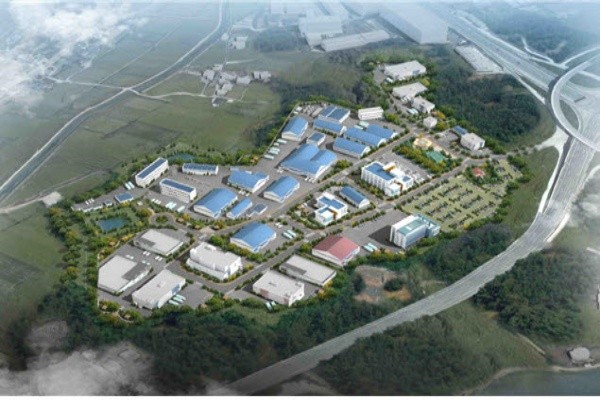It has been reported that Dongjin Semichem has been supplying “ArF photoresists” to Samsung Electronics. It is a meaningful example of localization of semiconductor materials since the export restriction imposed on EUV photoresist by Japanese Government in July of 2019 towards South Korea. It is expected that Dongjin Semichem will continue to expand its portfolio of photoresists from here and out.
According to the industry on Thursday, it has been confirmed that Dongjin Semichem has been supplying ArFi (argon fluoride immersion) photoresists to Samsung Electronics for its state-of-the-art DRAM production lines since the end of last year.
This is the first time that Dongjin Semichem is supplying ArF photoresists to Samsung Electronics. Until now, Dongjin Semichem had mainly been supplying KrF photoresists that are one grade lower than ArF photoresists. However, it can be seen that Dongjin Semichem’s upgraded technical skill has been recognized by Samsung Electronics by supplying ArFi photoresists.
Photoresist is a material that is always used during photolithography process where circuit designs are repeatedly printed through light. Circuit designs can be patterned once photoresists are evenly applied on wafers before the process.
Circuit designs can become thinner and more elaborate depending on a light’s wavelength. The reason why EUV light source that has a wavelength of 13.5 nanometers is starting to be used over KrF (248 nm) and ArF (193 nm) is because semiconductor companies want to pattern even smaller circuits more evenly. ArF light source is currently the most used light source at semiconductor production lines.
ArF lithography has a dry technique that uses air to adjust the refraction of a light that reaches wafers and an immersion technique that uses liquid with a high refractive index. Dongjin Semichem currently supplies photoresists that can satisfy ArF immersion lithography process that many semiconductor companies use as the main process.

Samsung Electronics’ ArFi photoresist supply chain was mostly made up of foreign companies. Dongjin Semichem has secured a golden opportunity since the export restrictions imposed by the Japanese Government. The company brought in a new ArFi equipment from ASML and it drastically increased its investment on hiring and necessary facilities and equipment. As a result, it was able to achieve development of ArFi photoresist added with an ability that can simplify semiconductor processes and application of ArFi photoresists to actual production lines in just a year and a half. It is reported that its ArFi photoresists have replaced other photoresists while not changing anything of production lines that are actually in operation.
“Replacing a material with a newer material is much more difficult than receiving an approval for a material during a new product R&D stage.” said one official from the industry. “It is heard that Samsung Electronics has also provided active support to Dongjin Semichem in order to introduce the company’s ArFi photoresists.”
Dongjin Semichem plans to accelerate diversification of its photoresists. It is expected that there will be many opportunities waiting for the company as dozens of ArFi photoresists are used during production. It is also expected that Dongjin Semichem’s ArFi photoresists will be used for Samsung Electronics’ next-generation semiconductors in the future.
Dongjin Semichem plans to operate its new plant in Hwaseong-si sometime in the middle of next month and increase production of both KrF photoresists and ArFi photoresists. Because the company is also working on development of EUV photoresists and photoresists used for foundry, it is expected to play a crucial role in localization of semiconductor materials.
Meanwhile, the company also succeeded in localizing raw materials of ArFi photoresist and is catching attention from the industry.
A representative for Dongjin Semichem said that the company would continue to strengthen its cooperation with South Korean raw material manufacturers in order to develop basic materials and create a semiconductor ecosystem.
Staff Reporter Kang, Hyeryung | kang@etnews.com